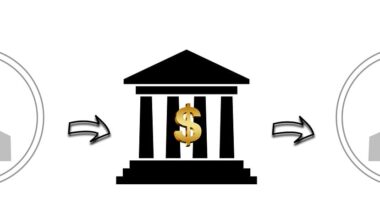Understanding Agile Budgeting
Agile budgeting is a vital aspect of project management that allows organizations to remain flexible in rapidly changing environments. It’s essential for ensuring that resources are allocated efficiently while adapting to unforeseen changes. Traditional budgeting methods often fall short in dynamic settings, making agile techniques necessary. By using iterative budgeting, organizations can better respond to shifting project scopes and requirements. This approach involves allocating budgets in smaller increments as the project progresses, allowing for adjustments based on recent data and outcomes. Teams can prioritize features and tasks according to current business needs and market conditions. Frequent reassessments of the budget help in avoiding overspending on features that may no longer align with strategic goals. Agile budgeting encourages collaboration among cross-functional teams, leading to more informed decisions on resource allocation. Tools and frameworks that support agile methodologies, such as Scrum and Kanban, can significantly enhance budgeting processes. Emphasizing transparency in budget tracking also motivates teams to stay aligned with project objectives. Agile budgeting not only provides financial discipline but also empowers teams to innovate and implement effective solutions in a fast-paced environment.
Benefits of Agile Budgeting
There are numerous benefits associated with adopting agile budgeting techniques in a business’s project management processes. These techniques facilitate increased adaptability, allowing teams to swiftly adjust their plans based on market feedback and actual project performance. Increased collaboration between departments leads to more informed financial decisions. One major advantage is the minimization of wasted resources, as teams focus on delivering high-value features that meet customer demands. In turn, this creates a culture of continuous improvement and encourages teams to experiment and innovate without the fear of excessive financial repercussions. Agile budgeting promotes better cash flow management through its incremental funding approach, providing better liquidity for ongoing projects. Additionally, risk management becomes streamlined, as frequent evaluations help identify financial risks early, allowing proactive measures. Regular budget updates facilitate enhanced communication with stakeholders, ensuring everyone is aligned with project priorities and respective financial considerations. With a transparent and adaptable budgeting process, organizations can achieve greater project success rates, fostering an environment of agility and responsiveness to market changes. Overall, agile budgeting is becoming indispensable in ensuring competitive advantages in continuously evolving sectors.
Implementing agile budgeting requires a shift in mindset towards financial planning, encouraging teams to embrace uncertainty and foster collaboration. Organizations looking to adopt these techniques must begin by cultivating an agile culture within their teams. This involves empowering team members to have a say in budget allocation, providing them with the autonomy to prioritize tasks based on real-time data. Engaging stakeholders early in the budgeting process encourages alignment of financial goals with organizational objectives. Establishing regular budget review meetings helps in identifying the need for adjustments to reflect the latest project developments. Utilizing technology and tools, such as project management software and financial tracking systems, can facilitate better budgeting practices by offering insights and data analytics. Furthermore, training sessions can equip team members with the necessary knowledge and skills to manage budgets effectively in an agile context. It’s important to make budgeting a dynamic continuum with a cycle of constant evaluation and improvement. By investing time and resources into this transition, organizations can unlock the potential of agile methodologies to enhance their budgeting processes, ultimately leading to improved project outcomes and financial success.
One of the key strategies for effective agile budgeting is to prioritize value-driven tasks over traditional cost-cutting methods. This requires a shift away from the mindset of merely reducing expenses to focusing on maximizing value creation. Establishing clear performance indicators allows teams to measure the success of their initiatives against tangible metrics. By aligning budgets with specific project goals, organizations can ensure that their financial resources are directed towards activities that will yield the highest returns. Incorporating customer feedback into budgeting decisions also plays a crucial role in agile environments. This enhances satisfaction and encourages a more user-centric approach to product development. As teams receive more frequent feedback, they can make real-time adjustments to their methods and budgets. Regularly revisiting the budget ensures it reflects the current project priorities, which can lead to increased stakeholder confidence and engagement. Thus, fostering an agile budgeting mindset creates a more efficient project management system by demand-driven resource allocation that maximizes effectiveness. In this way, businesses can remain lightweight and capable of responding swiftly to changes, further reinforcing their competitive edge in today’s dynamic market.
Challenges to Agile Budgeting
Despite the numerous advantages, organizations may face challenges when implementing agile budgeting techniques. One significant obstacle is the existing organizational culture, which may resist change and adhere to traditional budgeting methods. Overcoming this inertia requires strong leadership commitment and consistent communication about the benefits of agile practices. Teams may also struggle to adapt their established processes to the agile framework, as ingrained habits can hinder flexibility and responsiveness. Another challenge lies in achieving accurate financial forecasting, as agile projects do not always provide predictability in costs. Work breakdown structures and detailed estimates are often difficult to achieve in rapidly evolving environments. Teams must be skilled in employing techniques like relative estimation and historical data analysis to enhance forecasting accuracy. Additionally, ensuring stakeholder buy-in can be challenging, as some individuals might be skeptical about the agile approach. It’s vital to demonstrate past successes and provide case studies that underscore the effectiveness of agile methodologies. Addressing these challenges is crucial to creating a seamless transition to agile budgeting, ensuring organizations are well-equipped to navigate future market demands.
Effective tools enhance agile budgeting by allowing teams to track and visualize their financial performance. Using software that supports agile project management aids in improving budgeting processes significantly. These tools can include features such as real-time tracking, budget forecasting, and reporting functionalities. By implementing cloud-based solutions, all team members can access updated information anytime, anywhere. It’s essential to choose tools that enable easy integration with existing platforms for a smoother transition. Historical data and analytics can also play a significant role in shaping future budgets, allowing teams to examine spending patterns and make data-driven decisions. The user interface should be intuitive to facilitate adoption across various teams. Furthermore, selecting tools that provide customization will enable businesses to tailor their budgeting processes to their specific needs. Regular training and support for team members to maximize these tools’ potential will foster a better understanding of agile budgeting benefits. Ultimately, the right technology stack can help organizations efficiently align their financial strategies with their operational goals, contributing to overall project success and responsiveness in dynamic business environments.
Looking ahead, the evolution of agile budgeting in project management will likely be shaped by emerging technologies and market trends. For instance, artificial intelligence and machine learning are becoming increasingly involved in financial forecasting and budgeting strategies. By leveraging data-driven insights, organizations can enhance decision-making accuracy and optimize resource allocation further. Integrating these technologies into the budgeting process can support the development of smarter budgeting systems that adapt in real-time to project needs. Additionally, the growing emphasis on sustainability and ethical business practices may influence how organizations approach budgeting. Companies might prioritize environmentally friendly initiatives over traditional profit-driven goals, leading to a more socially responsible budgeting framework. Real-time reporting and collaboration will likely become more mainstream, enabling teams to react swiftly to changing priorities and market conditions. As agile methodologies continue to gain popularity, finding innovative ways to manage budgets within this framework will be essential. Embracing these forthcoming trends will help organizations maintain a competitive advantage, navigating challenges while capitalizing on opportunities in today’s fast-paced business landscape.
Conclusion
In conclusion, agile budgeting techniques are crucial for organizations aiming to thrive in dynamic business environments. The flexibility and adaptability they provide can enhance the project management process significantly. By focusing on value-driven budgeting, fostering collaboration, and leveraging technology, companies can achieve financial success and project profitability. While challenges exist in transitioning to agile budgeting, the benefits greatly outweigh the difficulties when implemented effectively. Organizations must consider building a culture that embraces agility, encouraging teams to take ownership of their budgeting decisions. Ensuring regular stakeholder communication and incorporating feedback will ultimately lead to a more integrated approach to budgeting. With continuous improvements and a focus on aligning finances with project goals, agile budgeting can help better position organizations against their competitors. As markets continue to evolve, agile budgeting will become increasingly essential. Investing in appropriate tools and technologies will further support this agile transition. Organizations that adopt these practices are better equipped to respond to changes, innovate effectively, and deliver value to their customers, thus ensuring long-term success in the ever-changing business landscape.


